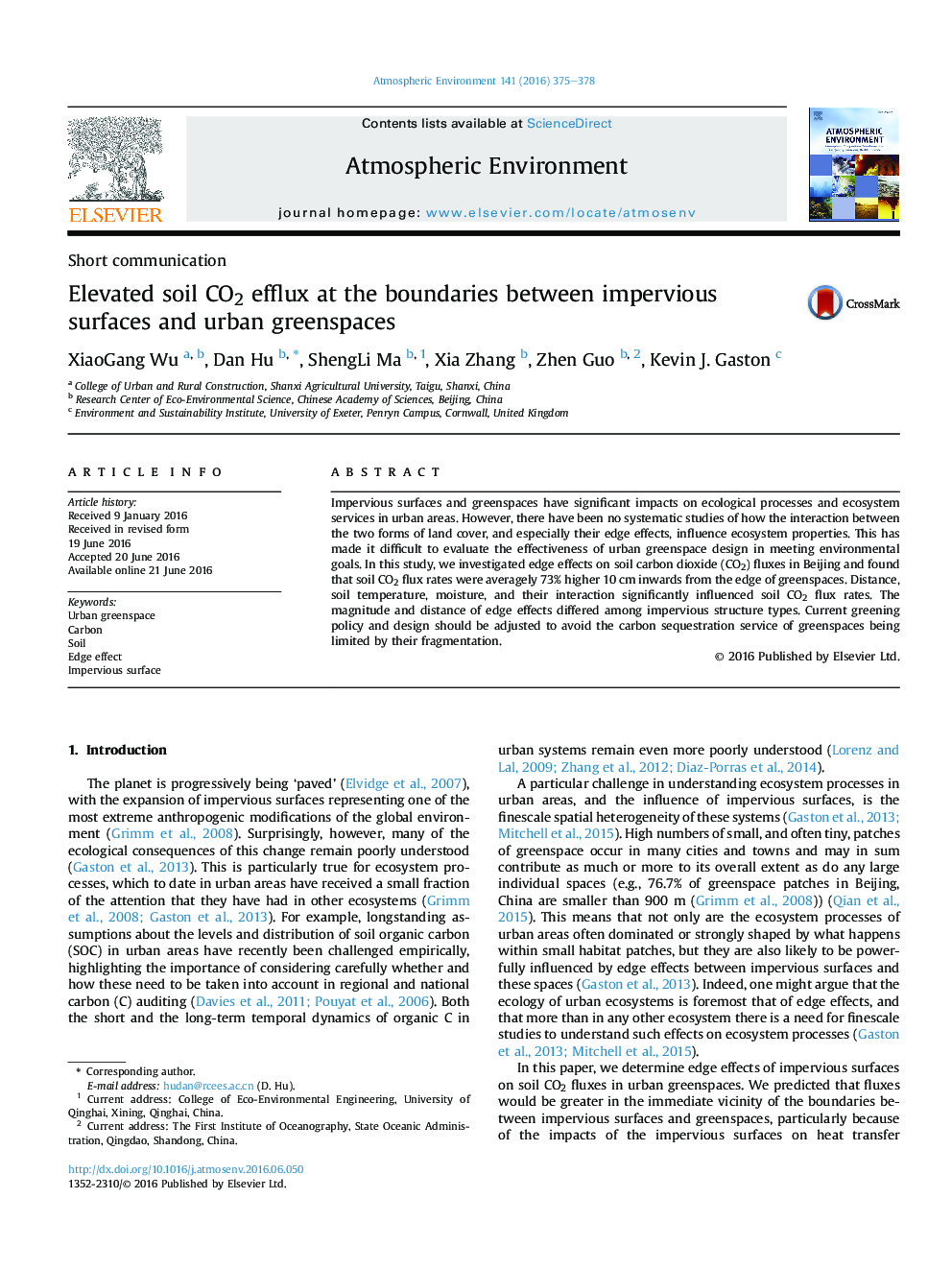| Article ID | Journal | Published Year | Pages | File Type |
|---|---|---|---|---|
| 6336119 | Atmospheric Environment | 2016 | 4 Pages |
Abstract
Impervious surfaces and greenspaces have significant impacts on ecological processes and ecosystem services in urban areas. However, there have been no systematic studies of how the interaction between the two forms of land cover, and especially their edge effects, influence ecosystem properties. This has made it difficult to evaluate the effectiveness of urban greenspace design in meeting environmental goals. In this study, we investigated edge effects on soil carbon dioxide (CO2) fluxes in Beijing and found that soil CO2 flux rates were averagely 73% higher 10Â cm inwards from the edge of greenspaces. Distance, soil temperature, moisture, and their interaction significantly influenced soil CO2 flux rates. The magnitude and distance of edge effects differed among impervious structure types. Current greening policy and design should be adjusted to avoid the carbon sequestration service of greenspaces being limited by their fragmentation.
Related Topics
Physical Sciences and Engineering
Earth and Planetary Sciences
Atmospheric Science
Authors
XiaoGang Wu, Dan Hu, ShengLi Ma, Xia Zhang, Zhen Guo, Kevin J. Gaston,
